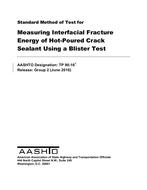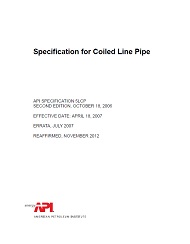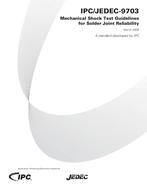AASHTO TP 90-16
$53.00
Standard Method of Test for Measuring Interfacial Fracture Energy of Hot-Poured Crack Sealant Using a Blister Test
standard by American Association of State and Highway Transportation Officials, 2016
Description
The blister test is used to determine the interfacial fracture energy (IFE) of hot-poured crack sealant at the application temperatures.
The blister test is a fracture test. The objective of the test is to apply tensile forces using hydrostatic pressure to delaminate sealant from a substrate. A thin film of sealant is poured on the top of a substrate (usually aluminum) disk that has a hole at the center. Hydrostatic pressure is applied through this hole at a constant flow rate causing delamination between the sealant film and substrate. Sealant deformation and applied hydrostatic pressure are recorded as a function of time. The amount of energy required to achieve complete delamination is called interfacial fracture energy and can be calculated from the pressure-deformation curve. This energy is considered a measure of bonding potential.
Product Details
- Published:
- 2016
- Number of Pages:
- 13
- File Size:
- 1 file , 1.1 MB
- Note:
- This product is unavailable in Ukraine, Russia, Belarus



